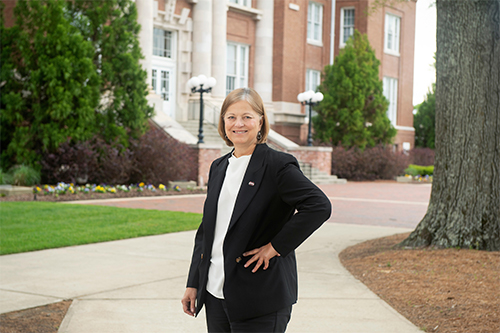Julie Jordan: AI for the future – Strike the right balance between innovation and regulation
It seems as though everyone is talking about artificial intelligence these days. From concerns about how it could affect the 2024 presidential elections to hopes that it might solve the global climate crisis, not to mention Mississippi State’s viral AI-generated mascot schedule release, AI has been top of mind for many.
Many of the narratives pushed in recent headlines have focused on a future where jobs have disappeared, and machines have taken over the world. But the reality is that AI has been used to our benefit in real-world scenarios for years, helping us with tasks like filtering spam out of our email inboxes and deciphering foreign languages with translation tools.

In fact, research from groups like the National Bureau of Economic Research has found that AI is expected to increase worker productivity dramatically – not replace workers with robots. AI is projected to enhance people’s skills, helping workers improve quality and increase efficiency at their daily tasks and allowing them to tap into their strengths and dedicate more time and energy to creativity and innovation.
For example, an underfunded and understaffed Mississippi government agency could use AI to automate paperwork, instead focusing greater time and energy on the needs of constituents. And computers could be trained to detect diseases earlier by scanning existing screenings for early signs, allowing doctors to save more lives.
These are just a few examples of AI’s potential to change the world as we know it. It’s exciting to imagine the possibilities of this evolving technology. But because other countries are developing their own AI capabilities, it’s important to treat this as a national security issue as well.
It’s been estimated that generative AI could raise global GDP by as much as seven percent, and countries around the globe are working hard to tap into this economic potential. Some even believe that China has an edge. In the current era of international competition, the U.S. must be proactive to ensure we don’t simply keep up with our global competitors but outpace them instead.
As we continue to break new ground each day with game-changing AI capabilities, it’s essential that we strike the right balance between innovation and regulation. We must be careful to address reasonable concerns about AI’s deployment without overregulating. If we fail to do so, we run the risk of stunting innovation and preventing the U.S. from realizing the massive benefits this transformational technology offers. The consequences of that outcome would be significant – AI will play a key role in not only America’s economic future, but also in maintaining our country’s national security by optimizing military logistics and defending against growing cybersecurity threats.
With conversations about AI sweeping the nation, it is crucial that lawmakers educate themselves on its complexities so they can establish smart, sensible policy without demonizing the tech sector and stifling economic growth. American institutions of higher education should also commit to increased research and development to help us prepare for an AI-driven future.
We’ve risen to that challenge here at Mississippi State University with significant investments and emphasis on AI computing and data science. Expanding our research capabilities and providing meaningful instruction that will prepare our students to seize the opportunities created by AI is paramount. I urge our education systems at all levels (K through higher ed) to follow suit and move with a sense of urgency to prepare our students to understand both the value of AI and the guardrails we need.
There are certainly questions that should be asked about AI’s future and how it fits into our society. But there are also endless possibilities. We should keep an open mind and embrace them together.
Dr. Julie Jordan is Vice President of Research and Economic Development at Mississippi State University.